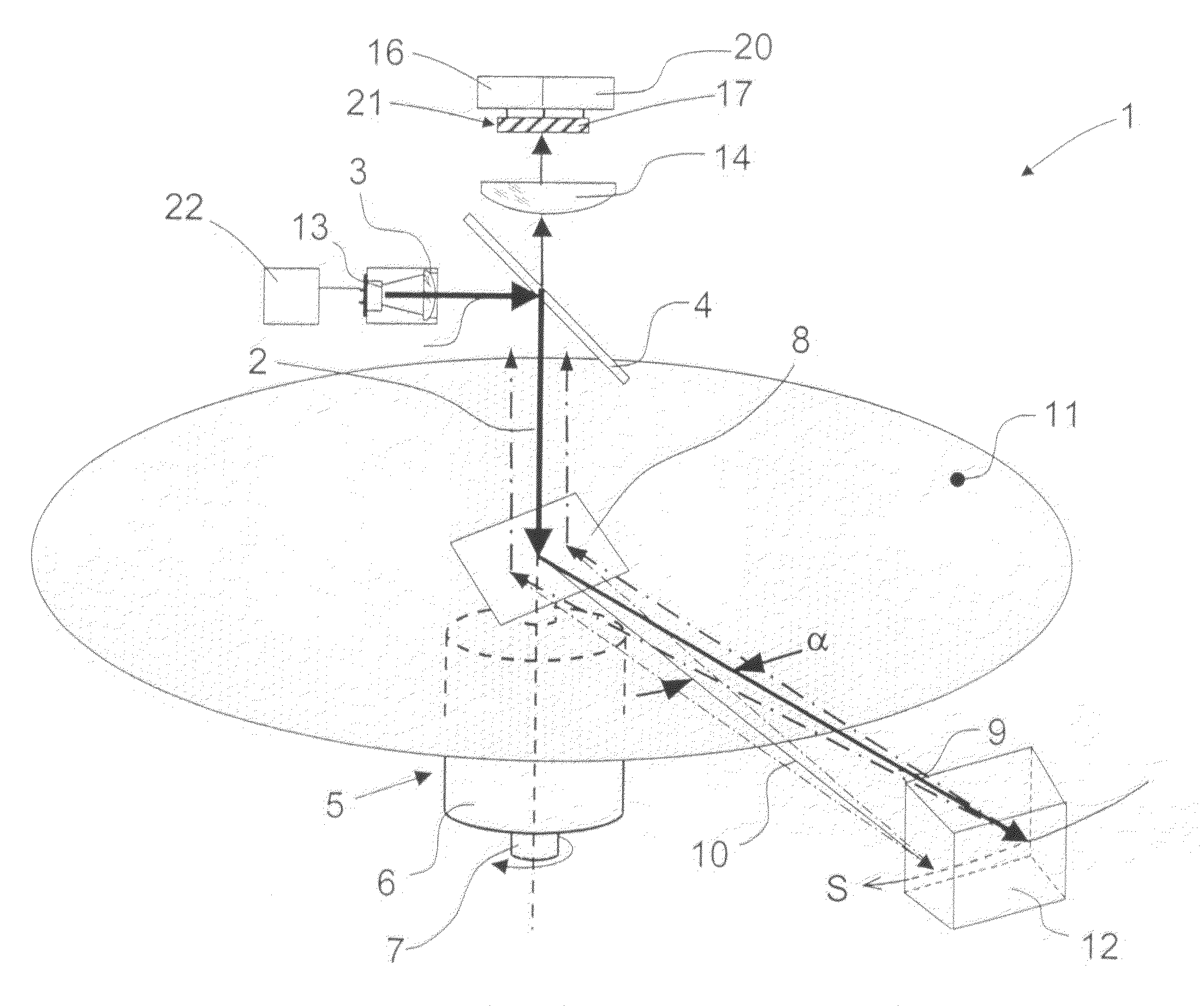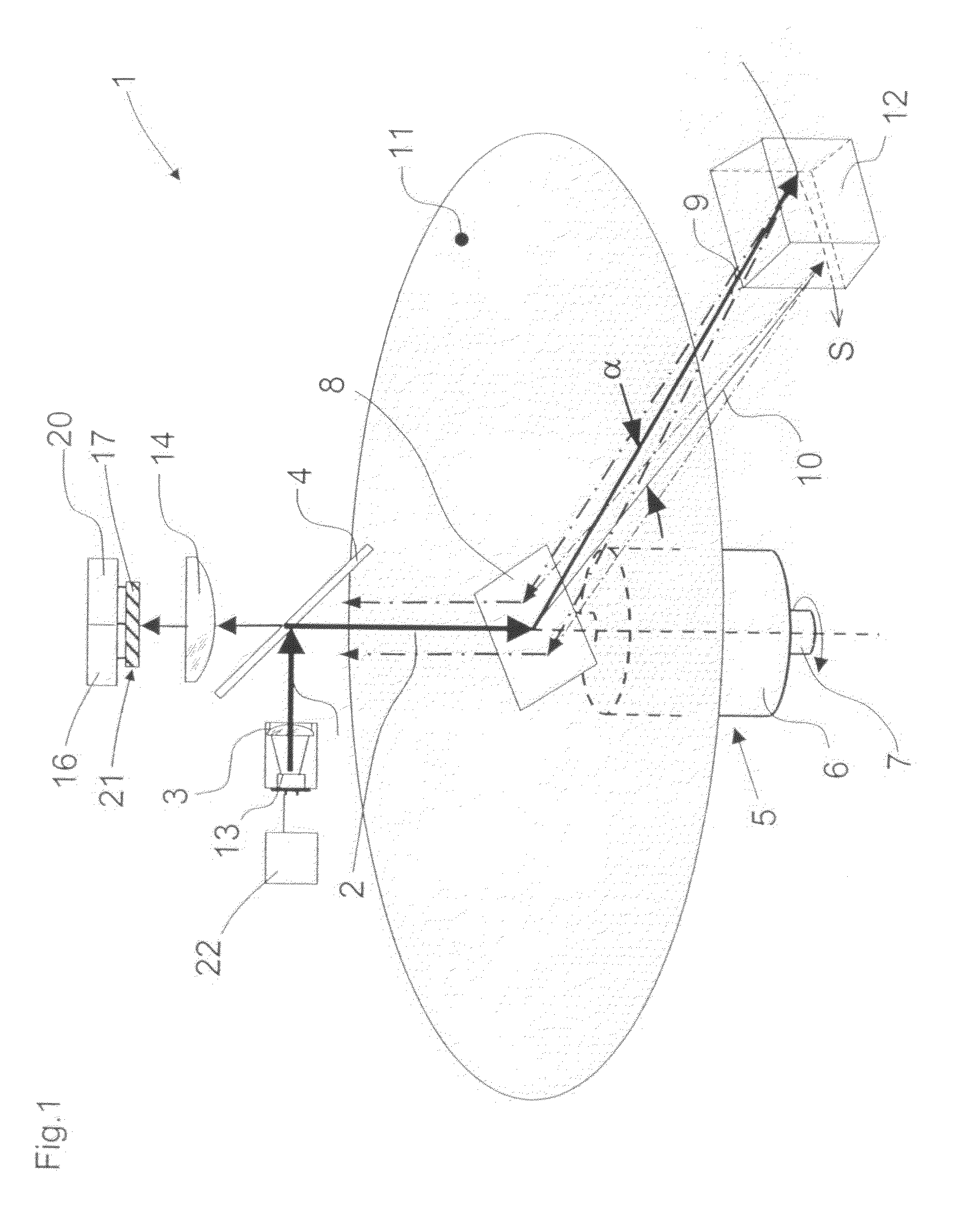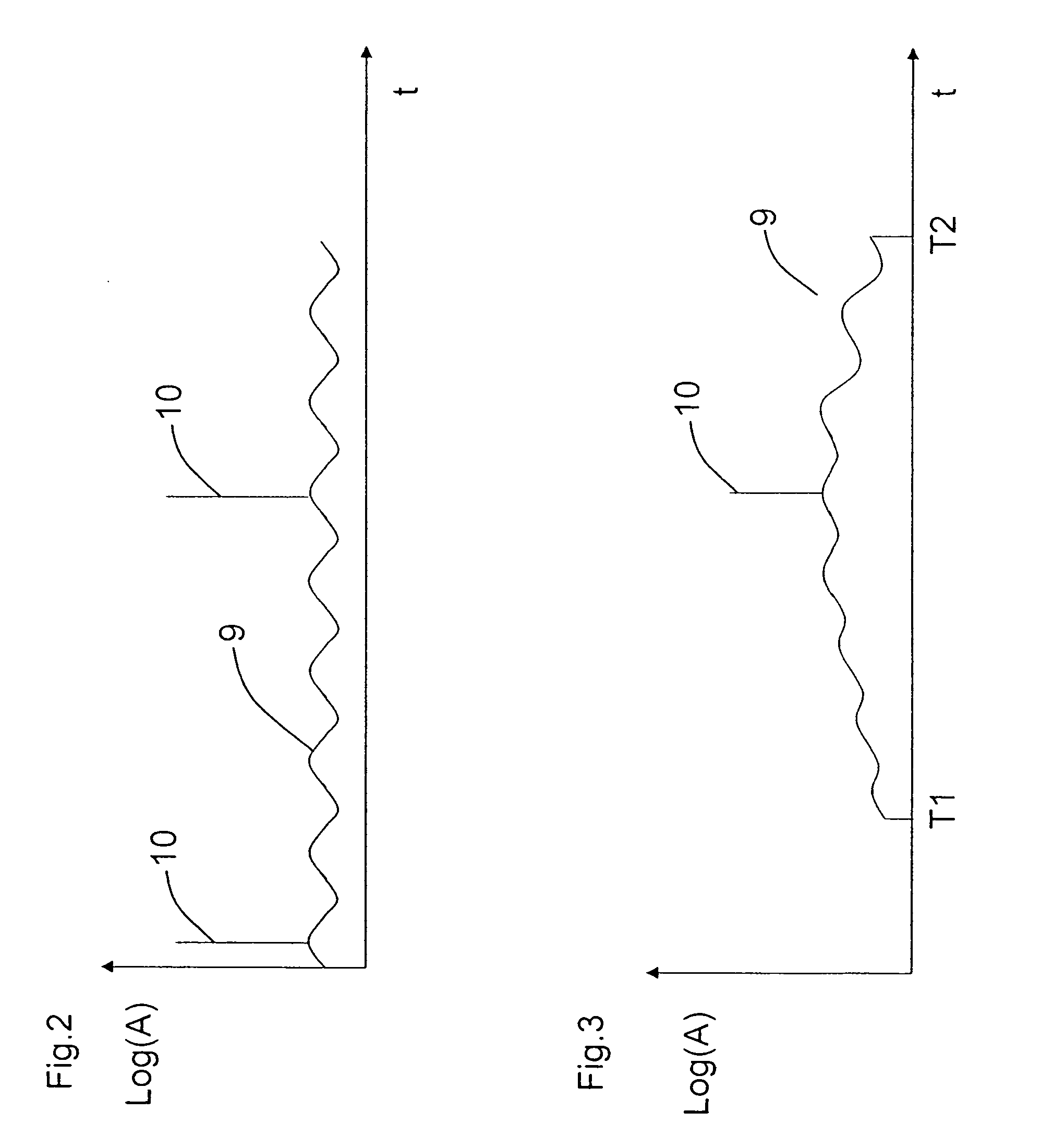Laser scanner
a laser scanner and laser technology, applied in the field of laser scanners, can solve the problems of high production cost, functional interference with the laser radar device, disadvantages of the state of the art, etc., and achieve the effect of improving the temperature compensation of the avalanche photodiode, reducing the adverse effects of external light, and not reducing the operating speed of the laser scanner
- Summary
- Abstract
- Description
- Claims
- Application Information
AI Technical Summary
Benefits of technology
Problems solved by technology
Method used
Image
Examples
Embodiment Construction
[0034]In the following the invention is described with reference to the embodiment of the invention shown in the drawings. FIG. 1 is a schematic, perspective view of a laser scanner 1 that emits light pulses 10 and a light measuring signal 9.
[0035]Such laser scanners are generally known from German patent publication DE 43 40 756 A1, the contents of which are incorporated herein by reference. This laser scanner operates on the basis of the elapsed time taken by the light; that is, successive light pulses are directed into a monitored region via a rotating mirror at a continuously changing angle. Pursuant to principles of autocollimation, received light pulses are evaluated on the basis of the elapsed time between the emission and receipt of light pulses while taking the speed of light into account. A distant signal is thereby generated which is representative of the distance between the laser scanner and an object. With the known angle of the rotating mirror, the position of the obj...
PUM
 Login to View More
Login to View More Abstract
Description
Claims
Application Information
 Login to View More
Login to View More - R&D
- Intellectual Property
- Life Sciences
- Materials
- Tech Scout
- Unparalleled Data Quality
- Higher Quality Content
- 60% Fewer Hallucinations
Browse by: Latest US Patents, China's latest patents, Technical Efficacy Thesaurus, Application Domain, Technology Topic, Popular Technical Reports.
© 2025 PatSnap. All rights reserved.Legal|Privacy policy|Modern Slavery Act Transparency Statement|Sitemap|About US| Contact US: help@patsnap.com



